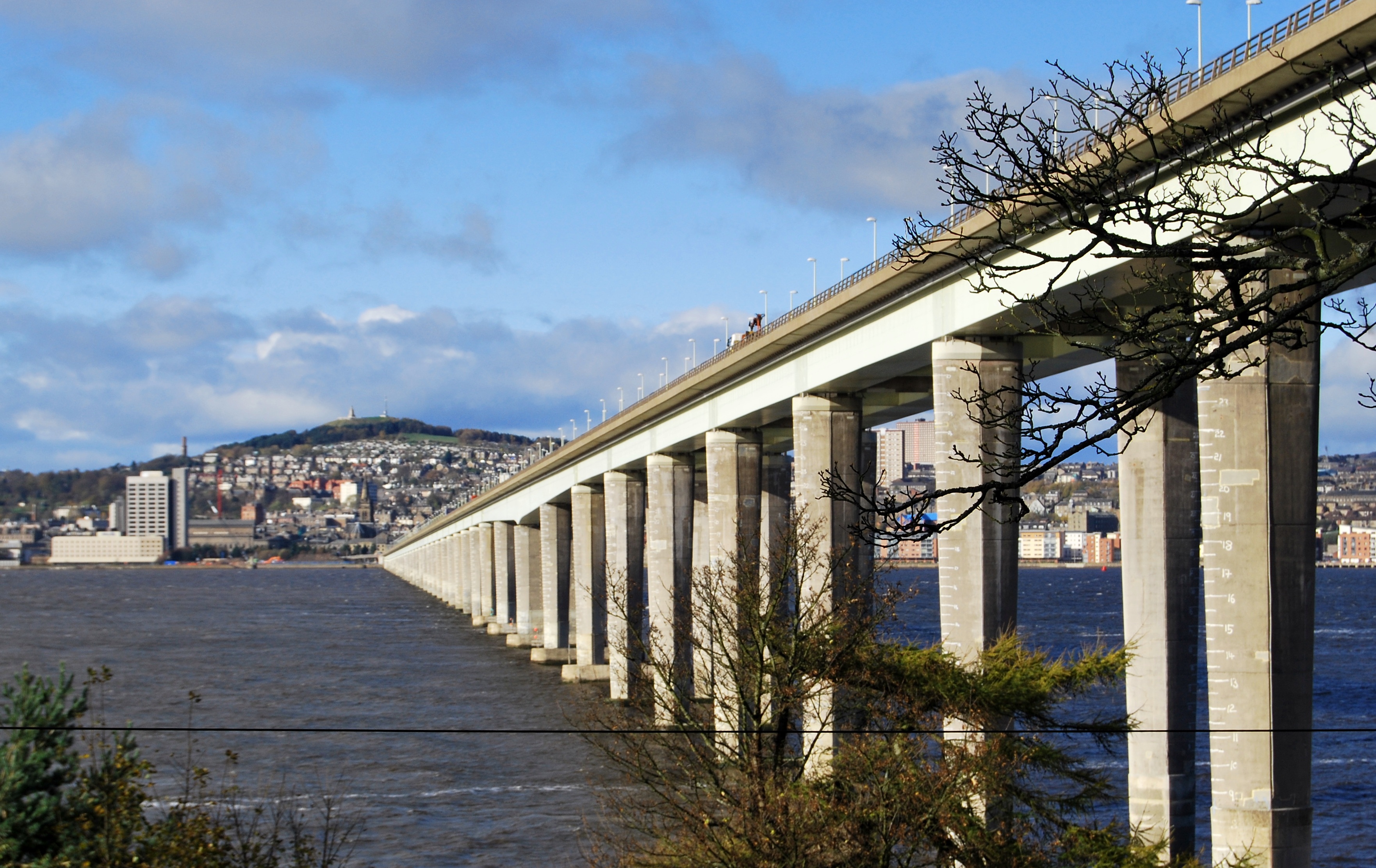
Mention the words “Tay” and “Bridge”, and we’re all too easily inclined to add the word “Disaster”. However, with the addition of “Road”, it’s a different matter entirely: 50 years after its official opening – on 18 August, 1966 – by The Queen Mother, the Tay Road Bridge still successfully carries an average 26,000 vehicles across the Firth every day.
Early suggestions for some form of road crossing across the Tay first emerged during the late 1920s – not surprisingly around the same time as similar proposals for spanning the Firth of Forth. However, economic depression and the Second World War kicked any idea of a Tay crossing into the long grass. Yet, by early 1955, the concept was being discussed seriously by Dundee’s leaders.
Attending the annual dinner of the Dundee and District Master Plumbers’ Association, the city’s then Lord Provost William Hughes assured his hosts that “before long we will be able to convince the (UK) Government, whether they decide on a bridge or tube over the (Firth of) Forth, that their job has not begun till they put a much more important one over the Tay.”
Within six months, the favoured location for a Tay Road Bridge was between the east side of East Newport to the east side of the old King William IV Dock in Dundee. “We have what we believe are reliable estimates that a bridge at this point, providing a 30-foot roadway, could be constructed for a sum not exceeding £3 million,” Hughes told the press at the time.
As it turned out, Hughes and his successors were unable to persuade the UK Government that their bridge should have a higher priority than spanning the Firth of Forth – the latter was given the green light in February 1958, and officially opened in September 1964. It took somewhat longer before the wheels started moving on the Tay Road Bridge project – not least because of the financial implications.
“We’re particularly proud of accomplishing this Tay Road Bridge,” Hughes’ successor as Lord Provost, Maurice McManus, told reporters after the official opening in 1966. “In the initial stages, this was a bridge that was built by money raised by the local authorities, Dundee paying the biggest percentage of it, along with Fife and Angus. We had no grants at all, unfortunately, from central government. We got a loan of £1.5 million originally, and they extended this loan later, but we have all this money to be paid back and we hope that the tolls will soon pay the money that the bridge has cost.”
Given that initial tolls were one shilling (5p) for motorcycles, 2/6 (12.5p) for cars and 10/ (50p) for lorries, paying back the £6 million final cost of the bridge – which took more than three years to build – was always going to take decades. Indeed, when the tolls were scrapped at midnight on 10 February 2008, the Scottish Government sealed the deal with a £14.8 million one-off payment to the Tay Bridge Board to cover its outstanding debts – after more than 40 years.
Lord Provost McManus regretted those tolls, but believed the bridge – “not only a tremendous practical asset to Dundee and Fife, but a boon to industry and commerce right down the east coast of Scotland – would “provide Dundonians with a new entertainment – just to cross to Fife and see their town by night.”
Yet even in 1966, McManus’s eyes were already on the next project for Dundee – an airport. “At long last we have bridged our river to cope with modern traffic. Now we must bridge our skies.”
But that’s another story!
First published in Scottish Memories, August 2016.